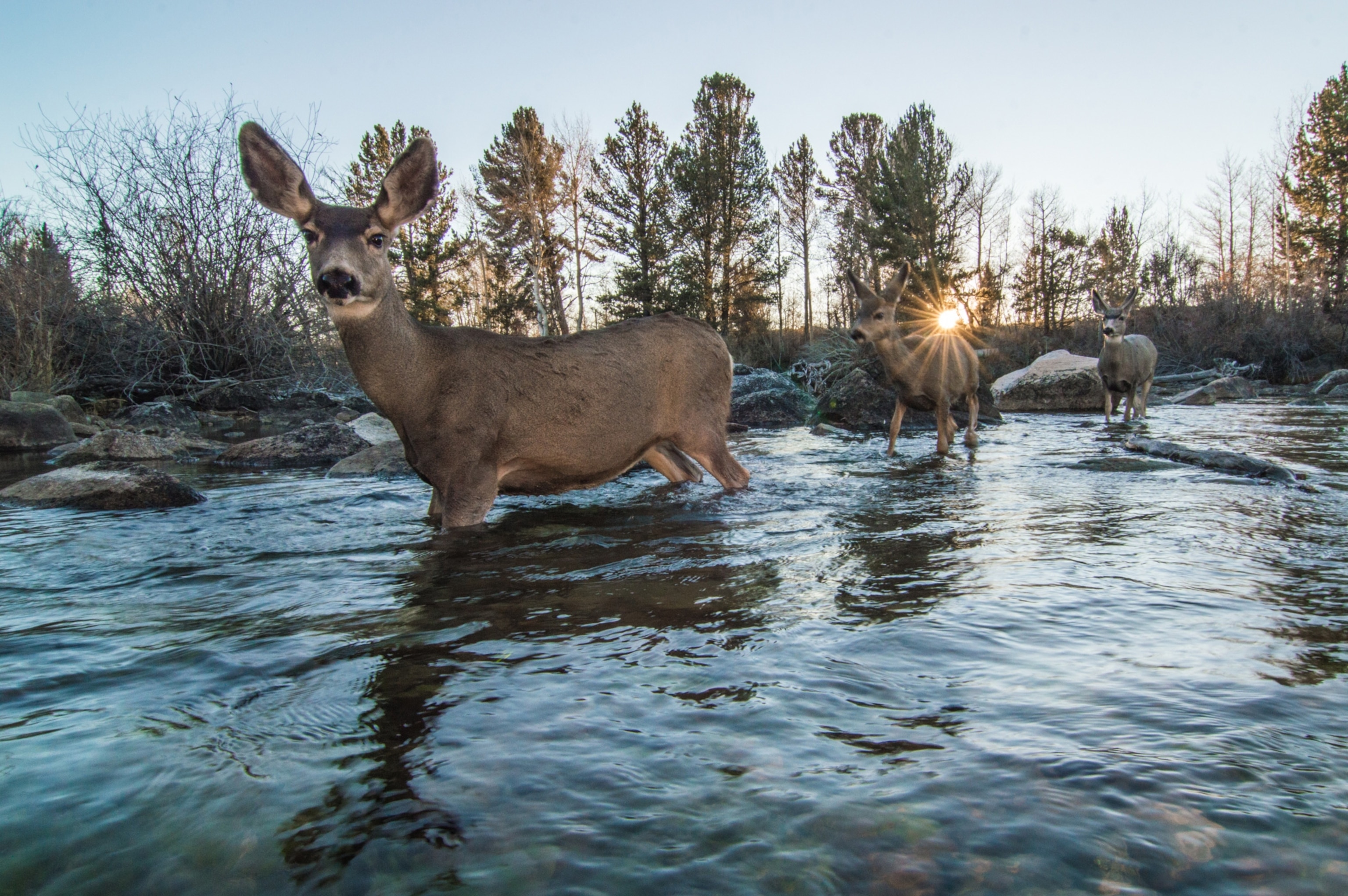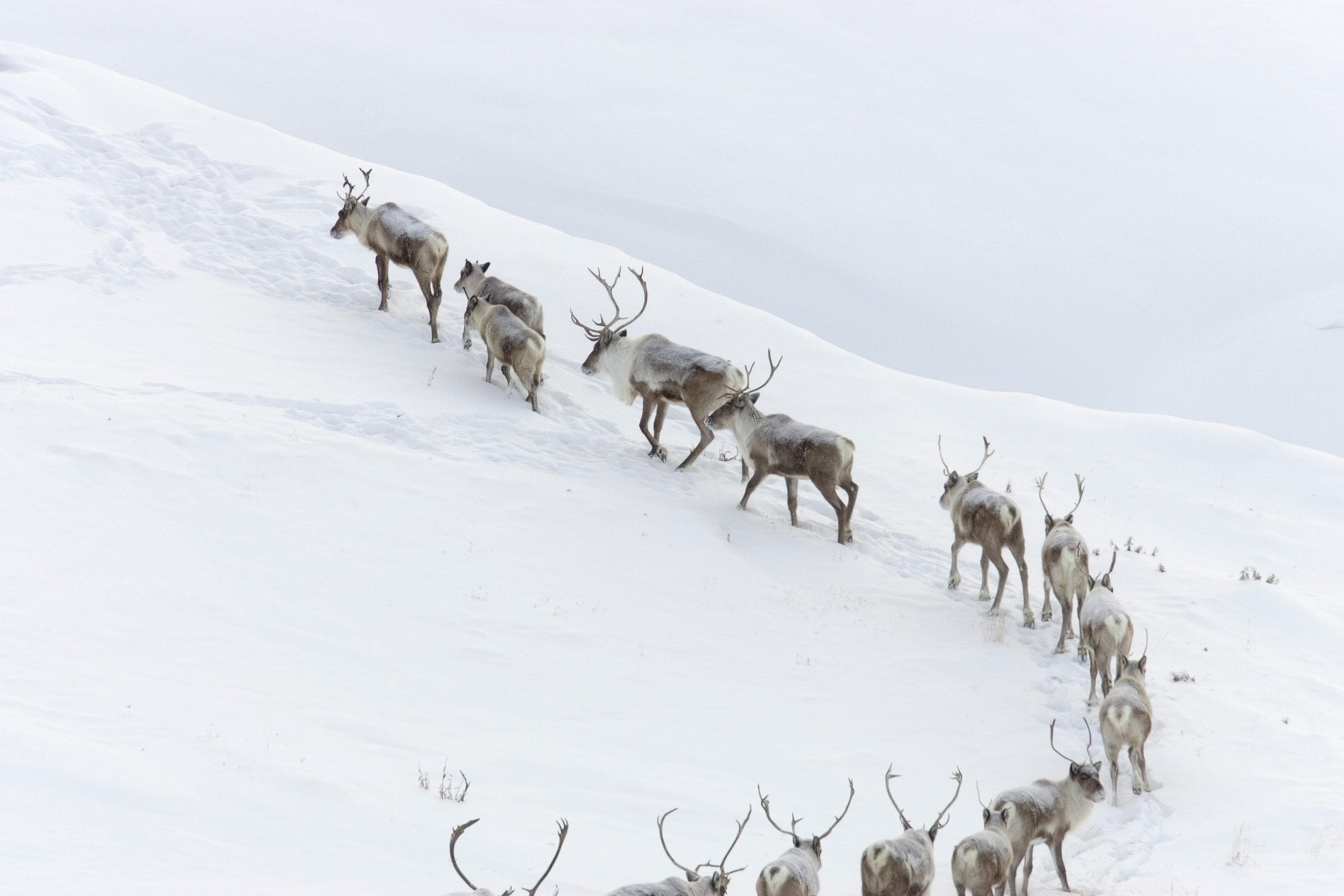
What a Trip! The Toughest Animal Migrations on Earth
One bird can fly more than 7,000 miles without stopping to feed, drink, or rest.
And you thought your family road trip was a slog.
Many species, from butterflies to caribou, take on incredibly long or challenging treks. (Read about the world's great migrations in our magazine.)
Weird Animal Question of the Week took a closer look at these journeys when Paul Anthony Kane asked “Which migrations are the most arduous?”
Birds are probably the most impressive migrants, both in terms of distance and toughness, says Jamie Gillooly, a biologist at the University of Florida.
For instance, shorebirds and passerine birds reduce their digestive organs before and during migrations to lighten their load, regrowing them once they're through, according to Gillooly, who recently co-authored a study on body mass and migration with Andrew Hein of Princeton University.
Winging It
The title of world's longest migration goes to the tiny Arctic tern, which flies “from the Arctic to the Antarctic and back,” says Gillooly.
On its circuitous route, the four-ounce bird logs about 44,000 miles (71,000 kilometers) of travel time. (Read how the tern's amazing journey is actually two times longer than we thought.)
Hugh Dingle, author of Migrations: The Biology of Life on the Move, adds that the terns even manage this feat in a matter of days—but also “they stop and feed on the way.”

When it comes to the most impressive non-stop flights, the bar-tailed godwit is the winner. These small, long-beaked shorebirds have been tracked flying from New Zealand to northern China without stopping to feed, drink, or rest, says Gillooly.
One tagged bar-tailed godwit racked up 7,145 miles (11,500 kilometers) on a non-stop trip from Alaska to New Zealand. (Related: "Alaska Bird Makes Longest Non-Stop Flight Ever Measured.")
“The only times they have to expend much energy is in the doldrums,” an equatorial region of the Pacific with still air and unpredictable weather, Dingle adds.
“Otherwise they’re following winds and they do it in two or three days.”
Amazing Feets
Monarch butterflies may be the stars of insect migrants, but Dingle cites the corn leaf aphid as a peripatetic underdog. (See photos of the world's great migrations.)
Though tiny—about 0.08 inch (2 millimeters) long—these insects travel about 620 miles (1,000) kilometers from Texas to Illinois in search of food, drawn to the light-yellow color of new plants.
“They’ve got to hit a target: new plant growth,” Dingle says.
The critters combat tough odds—they're favorite prey of birds and other animals—by "making lots and lots of aphids," he adds.
Even big-mammal migrations can go unnoticed.
Scientists only recently discovered mule deer migrate about 150 miles (241 kilometers) through Wyoming, crossing highways, fences, and rivers along the way.
Caribou of the Arctic regions move from boreal forests to the tundra and back again every year, Dingle says. Though their journey isn’t far when compared with other migrants—about 600 miles (1,000 kilometers)—it’s a tough one, since walking takes more energy than flying or swimming.
After all, hoofed mammals can’t ride the winds. (Also see: "A Gray Whale Breaks the Record for Longest Mammal Migration.")

End Game
It's also worth noting that the difficulty of animal migrations are probably overestimated by us humans, Dingle says—most species are well adapted for their lifestyles.
In reality, for most critters, the hardest part of life is making it to adulthood, he says.
So "arduous" may be in the eye—or the hoof, wing, or fin—of the beholder.
Weird Animal Question of the Week answers your questions every Saturday. If you have a question about the weird and wild animal world, tweet me, leave me a note or photo in the comments below, or find me on Facebook.





